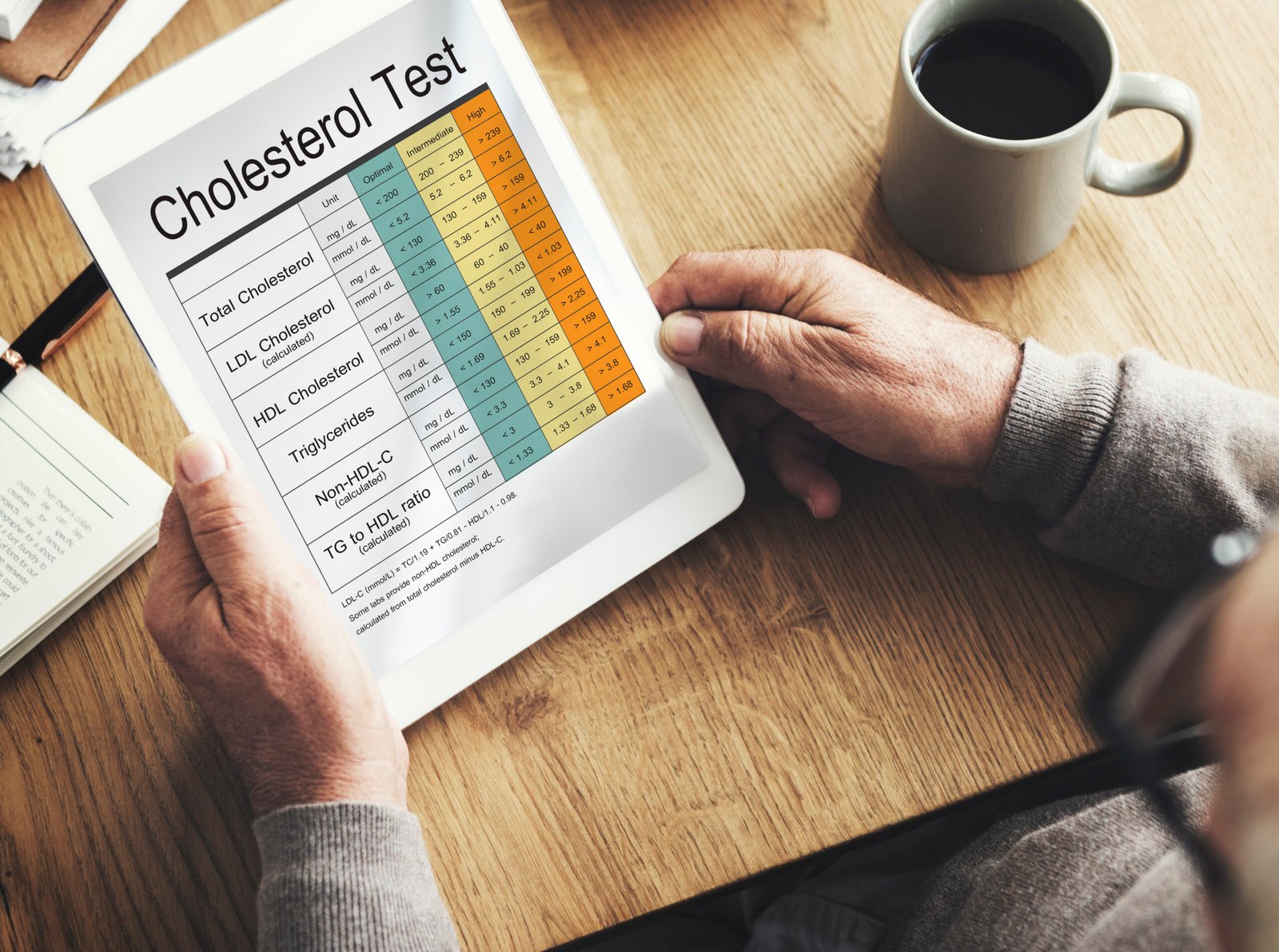Use this page to understand your cholesterol and triglyceride results and see if they are in the healthy range.
Cholesterol is a fat-like substance that your liver produces or absorbs from the food you eat. While it is essential for good health, maintaining the right levels is crucial.. Maintaining healthy cholesterol levels is a great way to keep your heart healthy. It can lower your chances of getting heart disease or having a stroke. Routine blood tests can show whether your cholesterol levels are healthy or unhealthy
What Are the Normal Ranges for Cholesterol?
Your cholesterol numbers show how much cholesterol is circulating in your blood. Your provider checks your cholesterol levels through a blood test called a lipid panel (or lipid profile).
Your lipid panel gives you the following numbers:
Total cholesterol: This is the total amount of cholesterol that’s circulating in your blood. Here’s the formula for calculating it: HDL + LDL + 20% triglycerides = total cholesterol.
The recommended normal ranges for adults is less than 200 mg/dl or 5.17 mmol/L
HDL level: HDL is high-density lipoprotein. This is the “good” cholesterol that moves extra cholesterol from your bloodstream to your liver. Your liver then gets rid of it from your body. It’s the one number in your lipid panel that you want to be high.
Your HDL cholesterol levels should be above 40 mg/dL. The higher the number, the lower your risk.
LDL level: LDL is low-density lipoprotein. This is the “bad” cholesterol that contributes to plaque buildup in your arteries. You need some LDLs because they carry cholesterol to your body’s cells. But having too many can cause problems.
Optimal levels are Less than 100 mg/dL or 2.6 mmol/L (This is the goal for people with diabetes or heart disease.)
Triglycerides: This is a type of fat. You need some triglycerides. But high levels (hypertriglyceridemia) can put you at risk for atherosclerosis and other diseases.
The recommended normal triglyceride level in adult is less than 150 mg/dl or 1.69mmol/L
However, it is important to discuss your specific results with your healthcare provider to understand what they mean for you.
| Dangerous | ||
| Total Cholesterol | LDL cholesterol | HDL cholesterol |
| 240 mg/dl and higher | 160 mg/dl and higher | Under 40mg/dl(male), Under 50 mg/dl (female) |
| At-Risk | ||
| Total Cholesterol | LDL cholesterol | HDL cholesterol |
| 200-239 mg/dl | 100-159 mg/dl and higher | 40-50 mg/dl(male), Under 50-59 mg/dl (female) |
| Heart-Healthy | ||
| Total Cholesterol | LDL cholesterol | HDL cholesterol |
| Under 200 mg/dl | Under 100 mg/dl | 60 mg/dl and higher (male/female) |
Is There a Difference Between Male and Female Cholesterol Levels?
For the most part, normal cholesterol levels are similar for both men and women. However, there is one key difference when it comes to HDL (the “good” cholesterol). Adult females generally require a higher HDL level (at least 50 mg/dL), while males are considered healthy with an HDL of 40 mg/dL or higher. This difference is important to keep in mind when assessing your cholesterol health.
How to convert my results from mmol/l to mg/l
When reviewing your cholesterol test results, it’s crucial to pay attention to the units of measurement. In the UK, cholesterol levels are typically reported in mmol/L (millimoles per liter), while in the US, they’re expressed in mg/dL (milligrams per deciliter). Depending on your lab’s reference system, you may need to convert between these units.
However, it is easy to convert vice versa
To convert total cholesterol, HDL-Cholesterol and LDL-Cholesterol levels:
Cholesterol mg/dl = mmol/l x 38.6
Cholesterol mmol/l = mg/dl ÷ 38.6
To convert triglyceride levels:
Triglyceride mg/dl = mmol/l x 88.5
Triglyceride mmol/l = mg/dl ÷ 88.5
Remember:
Understanding your cholesterol levels can provide valuable insight into your risk for heart disease. However, it’s important to remember that these numbers are just one piece of the puzzle. Your healthcare provider will also consider other factors like age, family history, blood pressure, and lifestyle when assessing your overall health and heart disease risk.
If your cholesterol levels fall outside the normal range, there’s no need to panic. Instead, have a conversation with your provider about what these numbers mean for you and work together to create a plan to improve them. With the right guidance, you can take proactive steps toward better heart health.
Dr.Sadiya
Lifestyle Nutritionist

